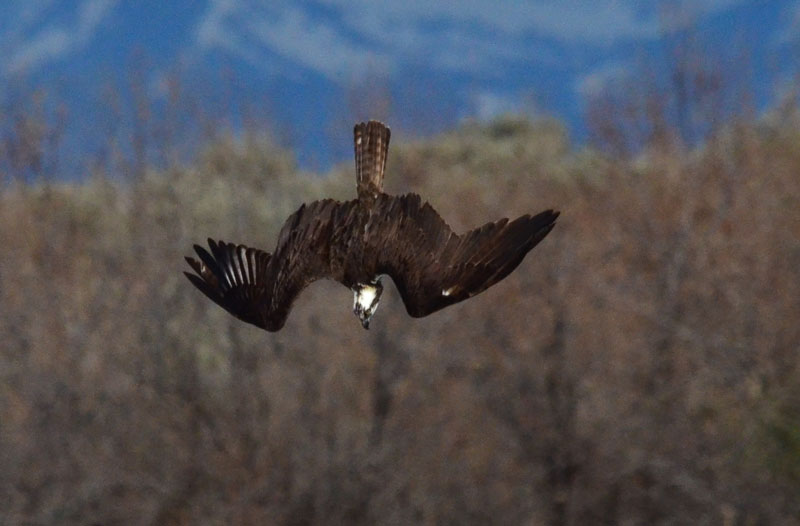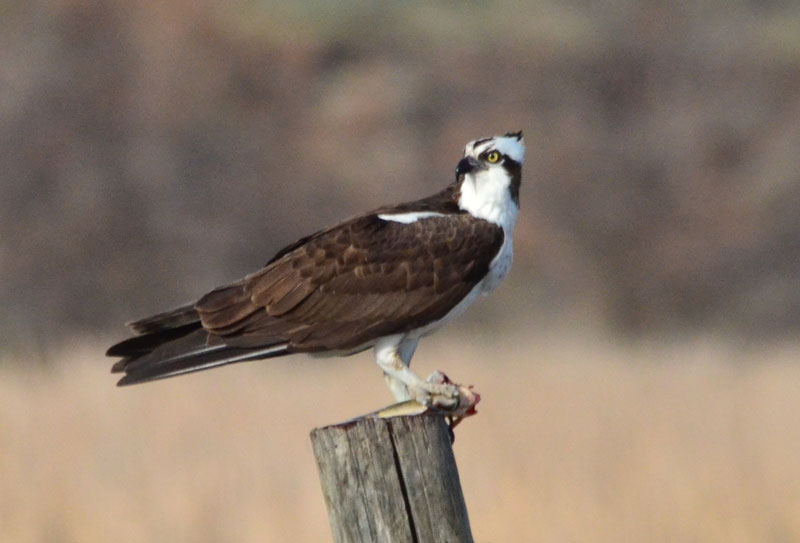SCHIESS: The Osprey — the fish hawk and thief
Published at | Updated at
The high speed “swish” of wings slicing through the air drew my attention away from watching several species of terns looking for some minnow in the shallows of Mud Lake. The Osprey was in mid-dive when I located it. The diving assassin disappeared under the water snatching a small catfish and retired to a fence post for dinner.
I smiled as I recalled the helpless feeling I had years ago while fishing for grayling at Grebe Lake in Yellowstone Park as an osprey grabbed one of the fish I was fighting for, then flying off with it and my fly. Once in the air, the agile bird fluttered his wings giving me a shower as it headed to feed his mate in a treetop nest.

Last week while fishing Ririe Reservoir I watched several of the “fish hawks” gather up kokanee that were near the surface and then had to battle several bald eagles as they flew back to their nest to feed their young near the Ririe Dam.
Ospreys have become one of the most successful nesting raptors in southeastern Idaho. This summer 19 nesting pairs from Rigby to Ashton Hill have be documented.
Also known as the fish hawk or sea eagle, these specialized fishers are well equipped for summering here in the Upper Snake River Valley.

These raptors with a wing span from five to six feet’ have the ability to hover in the air locating a fish before the dive. During the dive, they position their entry into the water feet first with their eyes glued on the target. They have the ability to rotate their outside claw from facing forward to face back so they have two claws on each side of the fish as they grasp it. Sharp spines or spicules on their feet also help in holding the slippery, wiggling fish.
Their compact oily feathers and their ability to close their nostrils with a membrane, allow them to dive up to three feet under the water. At times they appear to struggle getting airborne after grasping their prey. This is usually due to the weight of the fish. They cannot land a fish over three or four pounds and have been documented to have drowned after grasping a fish too large.

Once in the air, their talons are strong enough to hold the fish with one foot, rotating it so the head is always facing forward while being transported.
Pairs usually mate for life and will nest in the same nest year after year. The male will feed the female most of the time during courtship and the raising of the young. The bond between the pair are strengthened by the quality of food delivered during courtship and nesting; no zirconium fish if you want to be a favored spouse.
Usually from three to four eggs are incubated with only one or two of them surviving through fledging. This year a pair in Burton and a pair in Plano hatched and raised four young.
Males will capture fish or snakes for the nest, eat the head of the prey and save the more nutritious body for the female and the young.
Males are also in charge of protecting the nest, but the female will also become involved. Great Horned owls are probably the greatest danger to osprey nests but last year while watching a nest near Ashton, I observed three cormorants circling it. Two other ospreys joined the parents in chasing the marauders from the area.
While fishing near an osprey nest, be aware they may be zoned in on a fish you are fighting. I know several fishermen who have received an extra shower by ospreys taking fish off their lines.

Living the Wild Life is brought to you by The Healing Sanctuary.


